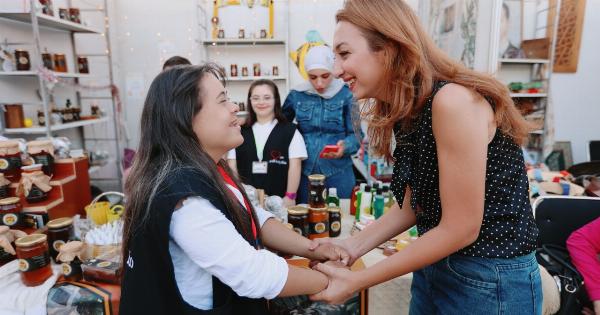World Down Syndrome Day (WDSD) is a day recognized by the United Nations and celebrated all over the world on March 21st. The goal of this day is to raise awareness of this genetic condition and promote the rights of people with Down syndrome.
This year, the organization behind the WDSD campaign has chosen Olivia Wilde, an actress and filmmaker known for her roles in “House” and “Tron: Legacy” as well as directing “Booksmart,” to be their ambassador.
Wilde stars in a short video that aims to break down stereotypes and celebrate the diversity of people with Down syndrome.
The importance of WDSD
Down syndrome is a genetic condition that is caused by the presence of an extra chromosome. It affects approximately one in every 700 babies born in the United States.
People with Down syndrome have intellectual disabilities, and often experience a range of other health issues, including heart problems and respiratory infections.
Despite this, many people with Down syndrome lead happy, fulfilling lives. With the right support and opportunities, they can achieve great things. However, there is still a great deal of prejudice and misunderstanding surrounding the condition.
That’s why WDSD is so important. It aims to raise awareness of the challenges faced by people with Down syndrome and to promote inclusion and understanding.
By highlighting the unique strengths and abilities of people with Down syndrome, we can break down barriers and create a more accepting and supportive world.
The Olivia Wilde video
The video featuring Olivia Wilde is a creative and uplifting expression of the values of WDSD.
In it, Wilde appears alongside a diverse group of people with Down syndrome, who sing and dance to the song “We’re Happy” by Pharrell Williams.
The video has a high-energy, joyful tone, and is infused with a spirit of inclusivity and diversity. The performers in the video come from all walks of life, and they are portrayed as having unique strengths and individual personalities.
The video emphasizes that people with Down syndrome are not defined by their condition, but are individuals with their own unique perspectives and talents.
The video ends with Wilde and the performers holding up signs with the words “We are not defined by Down syndrome” and “I am me.” These messages encapsulate the spirit of the video, which is all about celebrating individuality and promoting inclusion.
Reaction to the video
The Olivia Wilde video has been widely praised for its positive message and its celebration of the diversity of people with Down syndrome.
It has been shared widely on social media, and has helped to raise awareness of the challenges faced by people with Down syndrome.
Many people have commented on the spirit of joy and positivity that the video evokes.
Some have even called it “the happiest video on the internet.” But more than that, the video has helped to raise awareness of the struggle for inclusion faced by people with Down syndrome, and has highlighted the importance of campaigns like WDSD.
The future of WDSD
The Olivia Wilde video is just one example of the powerful impact that WDSD is having around the world.
By raising awareness of Down syndrome and promoting inclusion and understanding, this campaign is helping to create a better world for people with this condition.
In the years to come, it is likely that we will see even more creative and innovative approaches to promoting the goals of WDSD.
With the help of ambassadors like Olivia Wilde and a growing community of supporters, we can continue to push for a more inclusive and accepting world for people with Down syndrome and other disabilities.
Conclusion
World Down Syndrome Day is an important opportunity to raise awareness of the challenges faced by people with Down syndrome and to promote inclusion and understanding.
The video featuring Olivia Wilde is a powerful example of the impact that the WDSD campaign is having, and the ways in which we can celebrate the diversity and individuality of people with Down syndrome.
By continuing to raise awareness and promote inclusion, we can create a world that is more accepting and supportive of people with Down syndrome and other disabilities.
So this March 21st, don’t miss the chance to join in the celebration of World Down Syndrome Day.


















